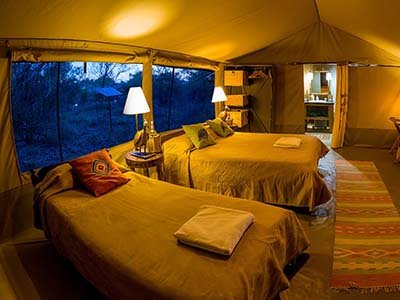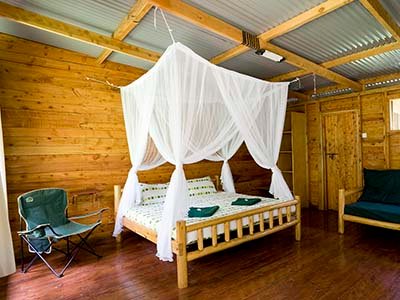Udzungwa Mountains National Park
Udzungwa Mountains National Park was created in 1992, mostly for the significance of its flora. It is 1,990 square kilometres in size and runs 80 kilometres from southwest to northeast.
The Eastern Arc Mountains’ biodiversity is at its peak in Udzungwa, which stretches all the way from Malawi to Mozambique. This is where you may follow some of Africa’s most endangered animals, some of which had never been seen by western eyes before 1990.
Udzungwa has a one-of-a-kind backdrop: a continuous stretch of forested mountains and waterfalls. The breathtaking “Sanje” waterfall is one of several that provide valuable water supplies to the surrounding area. The region is covered with an astounding 3,300 plant species and roughly 600 varieties of trees, ranging from lowlands to heights of nearly two kilometres; open places are few. The star chestnut tree is one of the most remarkable trees you will see, with no side branches for the first 15-20 metres. Other remarkable tree species are the fig tree, with its massive buttressed trunk, the red mahogany, which may reach heights of 60 metres, and the plum tree, whose ripening purple fruits attract elephants.
Over 250 woodland bird species can be found here, some of which are endangered or endemic. Specialities include the Udzungwa Forest Partridge, white-winged Apalis, and dappled mountain robin. Or just listen for Livingstone’s turaco, silvery-cheeked hornbill, and crested guineafowl. This diversified rainforest attracts the most amazing animals, including mammals, birds, and amphibians. Primates are the most common mammalian occupants, with nine distinct species found in the forests. The Iringa red colobus also known as the Udzungwa red colobus, Udzungwa galago, and Sanje mangabey, can only be found here.
Although butterflies are considerably simpler to identify in the field, the most interesting ones, such as the venomous Pseudacraea, reside in the forest. One chameleon species, the spiny-flanked chameleon, is exclusively found in Udzungwa, while four others are unique to Tanzania.
With all of these small wonders, you’ll nearly forget about the larger game. Lions move freely between neighbouring parks. Common sightings include Harvey’s duiker, bushbuck, klipspringer, bush pig, and blue duiker. You could also spot the shy suni, a small antelope, the uncommon puku antelope, or the bigger Abbott’s duiker, which is located only in Tanzania and is seldom seen.
Few tourists ever go far into this forest, creating a unique sense of loneliness. With so many indigenous species, this series of remote highlands has been called the African Galapagos.
There are seven hiking paths in Udzungwa Mountains National Park
Hikers will love Udzungwa. The park contains a lot of stunning waterfalls to explore as well as an extensive network of woodland paths. A famous 5 km (4-5 hour) climb leads to Sanje Waterfall (170 m), the lowermost of which flows 70 metres into the forest below, creating a misty spray in its wake.
Other routes that will take you through breathtaking views include:
- The Prince Bernhard Path (1 hour)
- Sonjo Path (1 km, 1 hour)
- The Njokamoni Trail (5 km, 5 hours)
- Trail from Campsite 3 (14 km/1 day)
- Mwanihana Mountain (38 km, 3 days)
- Rumemo Trail (65 kilometers/5 days)
250 m to 2,576 m in height (Mt. Luhomero).
Temperatures fluctuate widely depending on the season and altitude.
Only the Miombo savannah region has a dry (May to October) and rainy (October to May) season; hiking paths may get slick from March to May.
The optimum time to visit is during the dry season, however, rain might fall at any moment.
The park is open all year, however, it might be treacherous in the rain.
The park is quite easy to get to by car. Dar es Salaam town of Mikumi (315 km/4 hours) on a decent asphalt road, followed by 63 km (1,5 hours) over a partial dirt road to Mangu’ula’s main gate. The western gates are not linked to Mangu’ula: Msosa gate is 10 kilometres from Mtandika and Udekwa gate is 63 kilometres from Ilula (on the trans-national highway).
Accommodation in Udzungwa Mountains National Park
Inside the park, there are various public and special campsites near the Mangu’ula entrance and along hiking trails (booking through the park). Outside the park: the Twiga hotel and rest house (booked via the park), as well as other hotels in the towns of Mangu’ula and Mikumi.
What to do Udzungwa Mountains National Park
Camping safaris, guided hikes to waterfalls and the forest, multi-day mountain climbing, bird viewing, and cultural tourism to cultural and historical sites both within and outside the park are all available.




